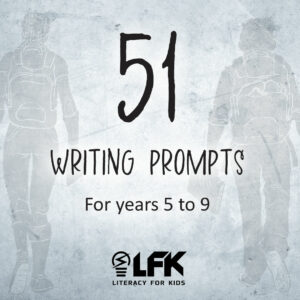Classroom Refresh and Routines: 5 Tips

We hope that our teachers enjoyed time with family with friends and that you had the chance to rest and recharge.
Taking the time on the first day or week back to do a classroom routine reset is an investment that will greatly benefit you and your students’ behaviours the rest of the year.
1. Let your students reteach the key routines to the class
On the first day back, let your students either form their own groups, or you can form groups (dependent upon how many routines you want to formulate). Each group will pick one routine or expectation. They will be responsible for reteaching that expectation (or routine) to the class. I’ve found that 20 – 30 minutes is enough to prepare.
This activity fosters creativity, and some independence and it’s not an academic focus. Ask them to create a poster or chart and encourage them to consider ~
- how will this help the class in the second semester (ie long term thinking)?
- what are the positive impacts? ( a great example is explaining how they will get extra recess time if they line up quickly/pack up effectively/be organised etc)
- the importance of this routine
2. A Station Rotation Stroll (requires sticky notes)
This tip will take a little extra preparation but it’s worth the effort. What are the key routines that you want to foster? Think of this like a ‘gallery’ where the students can walk through the stations (ie routines). You can find pictures of these routines showing the ‘correct’ way versus the ‘incorrect’ way. Print these photos in full A4 size (or A3) and attach them to a larger chart. Here are some ideas/scenarios:
- a tidy desk and an untidy desk
- a student reading independently correctly and incorrectly
- library borrowing procedures
- using a study timetable above your desk at home (great for older students) versus a student being distracted
- checklist or calendar for assignment/exam study vs a student appearing stressed
- a student forgets their login info for computer work
- good manners when visiting the administration office
- politely looking at a speaker vs being distracted/noisy/disruptive
To add to the gallery theme, you might want to play soft music as the students move through the stations. Issue them with sticky notes to write a comment, caption or label for each poster. Guide them to consider: what is the habit shown? what is the expectation as represented in the photo? what is the expected behaviour? Challenge them to come up with new ideas that haven’t been written on the sticky notes ~ the aim is for them to think about the expectation more deeply and its benefits.
3. A Class Mascot/Plant/Pet
If you’re brave you might try a class pet but a class plant works just as well here. A stuffed animal is another option as the class mascot. This works well in the younger grades, even up to Year 4.
I’m a plant lover so a pot plant worked well for me. Step 1 is to give it a name, such as ‘Veronica’ or ‘Norman’ – something fun and a little unusual. Introduce them as a new class member and start the conversation around: What do we need to teach Veronica/Norman? As part of our class, what do they need to do to feel successful? What are our expectations around how we treat each other?
A plant/pet/mascot can be taken for a walk around the school to teach them the procedures at the tuckshop, library, how you greet the staff at the office, rules for going to the bathroom, sports equipment etc.
This is a little bit of fun and a light-hearted way to review rules, rather than feeling lectured to.
4. Exit Ticket framework
Exit Tickets or Three Two One help you assess if students have “caught what you taught” and you can apply them to anything. It’s simple to review a specific rule. During the first week, ask three students to share important routines to remember with a specific routine. Next, only two students can ask questions about that routine. Lastly, the one is the final sum-up of why that routine is important.
5. A Little Reverse Psychology as a Strategy
You will need to read the class to see whether this approach will be effective. The goal is to cut through revising many of the obvious routines so that you’re not wasting instructional time. Phrases such as, “It’s so wonderful that this class transitions to the carpet so well.” “Isn’t it great that we are lining up quickly?” “Thankyou for remembering to push your chairs in.” “This class is special because they already know how to….”
We want the students to think Ok, yep we don’t need to practice.
In Summary
Hopefully, you feel better about returning to school in January and have a plan for setting up your expectations and routines.
Want to shape confident readers? Want more from your literacy program? Watch how this entire Year 6 cohort achieved a 100% improvement in their comprehension and spelling results (after independent, standardised testing). Some students were below testing at the commencement of the school year ~ yet showed reading improvement by December!
Contact us for a 30-day free trial in your school or classroom. New schools receive this terrific Teaching Resource: 51 Writing Prompts. These are a complete hit with our schools and you will not be disappointed with these image-rich, kid-centred Writing Prompts that will enthuse your writers.




Brought to you by Tanya Grambower
